Docker Hub in 2024: Navigating the New Updates and Features
As Docker Hub continues to evolve, 2024 brings a range of new features and improvements that make container management more efficient for developers and organizations. Docker Hub, a key tool for managing container images, now offers better security, automation, and cloud-native integrations. In this article, we’ll explore the new updates in Docker Hub and how they can enhance your container workflows.
What is Docker Hub?
Docker Hub is a container registry service that allows developers to store, manage, and share container images. It serves as a central repository for Docker images, making it easier to distribute and version software components. Key capabilities include:
- Image Management: Store, tag, and distribute container images efficiently.
- Public and Private Repositories: Create both public and private repositories for secure image management.
- Integration with CI/CD Pipelines: Automate builds and deployments using Docker Hub in DevOps workflows.
Key Updates and Features in Docker Hub 2024
Docker Hub introduces several new updates and enhancements in 2024 to streamline container management and improve security.
1. Automated Image Builds and Deployment Triggers
Docker Hub now supports automated build triggers, enabling developers to automate the creation of container images whenever code changes are pushed to a repository.
Key Features:
- Custom Build Rules: Configure build triggers for specific branches or repositories.
- Real-time Notifications: Get notified immediately when a build completes or fails.
- Deployment Triggers: Automatically deploy images to Kubernetes or cloud environments after successful builds.
2. Enhanced Security with Image Signing and Scanning
Security is a top priority in 2024, and Docker Hub offers automated image scanning and signing tools to ensure that only secure images are used in production environments.
Key Features:
- Automated Vulnerability Scans: Detect vulnerabilities in images before they are deployed.
- Image Signing: Use Notary v2 to sign images and verify their authenticity.
- Security Reports: Generate detailed security reports for compliance and auditing purposes.
3. Improved Role-Based Access Control (RBAC)
Docker Hub’s RBAC system has been expanded to provide more granular access controls. Teams can now assign specific permissions to individual users or groups, ensuring that sensitive repositories are protected.
Key Features:
- Custom Roles: Create roles with tailored permissions to meet organizational needs.
- Audit Logs: Monitor user activity to track who accessed or modified repositories.
- Single Sign-On (SSO) Integration: Use SSO for streamlined authentication and enhanced security.
4. Integration with Cloud Platforms and CI/CD Tools
Docker Hub integrates more seamlessly with major cloud providers and CI/CD tools, enabling faster and more efficient workflows.
Key Integrations:
- Kubernetes Integration: Deploy container images directly from Docker Hub to Kubernetes clusters.
- CI/CD Pipeline Support: Automate image builds and deployments using tools like Jenkins, GitHub Actions, and GitLab CI.
- Multi-cloud Support: Manage containers across AWS, Azure, and Google Cloud from Docker Hub.
5. Image Version Control and Rollback Features
Version control in Docker Hub has been improved to provide developers with more flexibility in managing image releases. Rollback features ensure that if an issue arises, developers can quickly revert to a previous version.
Key Features:
- Image History Tracking: View detailed logs of all image versions and changes.
- Rollback with One Click: Revert to a previous image version instantly if an update fails.
- Version Tags: Use custom tags to organize and manage different versions of container images.
Table: Docker Hub 2024 New Features Overview
| Feature | Description | Benefit |
|---|---|---|
| Automated Builds & Triggers | Automatically build images upon code changes | Faster development and deployment cycles |
| Image Signing & Scanning | Sign and scan images for security vulnerabilities | Enhanced security and compliance |
| Role-Based Access Control (RBAC) | Granular access control for repositories | Protect sensitive repositories |
| Cloud & CI/CD Integration | Seamless integration with major cloud platforms | Faster, automated workflows |
| Version Control & Rollback | Track changes and rollback with ease | Minimize downtime during issues |
Key Takeaways
- Docker Hub’s automated builds and deployment triggers streamline development workflows and ensure faster releases.
- Enhanced security features, including image signing and scanning, protect container images from vulnerabilities.
- RBAC improvements offer better control over repository access, ensuring sensitive data is secure.
- Cloud and CI/CD integrations enable more seamless management of containers across multi-cloud environments.
FAQ
What are Docker Hub’s new security features in 2024?
Docker Hub now offers automated vulnerability scanning, image signing with Notary v2, and detailed security reports to ensure images are safe for production use.
How does Docker Hub integrate with CI/CD tools?
Docker Hub integrates with tools like Jenkins, GitHub Actions, and GitLab CI, automating image builds and deployments as part of CI/CD pipelines.
Can I manage multiple image versions on Docker Hub?
Yes, Docker Hub provides version tracking and rollback capabilities, allowing developers to manage multiple versions and quickly revert to previous versions if needed.
Does Docker Hub support multi-cloud environments?
Yes, Docker Hub integrates with AWS, Azure, and Google Cloud, enabling developers to manage containers across different cloud platforms.
Conclusion
Docker Hub’s new features and updates in 2024 make it a more powerful tool for developers and DevOps teams. With enhanced security, automation, and cloud integration, Docker Hub streamlines container management, making it easier to build, deploy, and monitor containerized applications. By leveraging these new tools, developers can create more efficient workflows, reduce downtime, and ensure that their applications remain secure and scalable.
